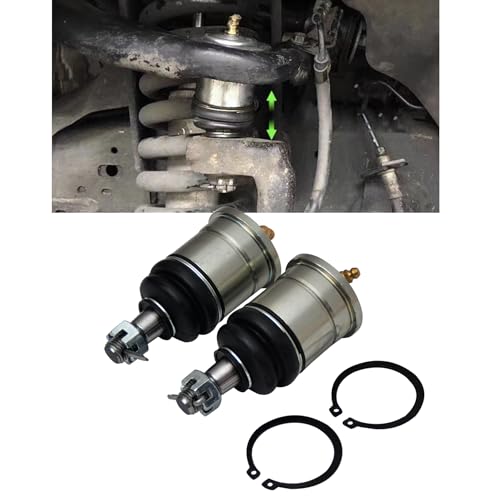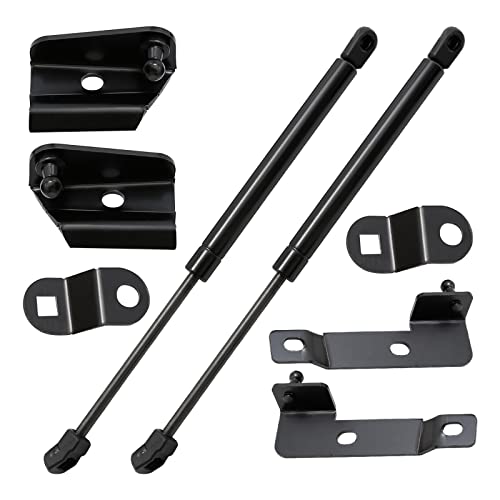Hi all. I hope this is the correct place to write my comment. Just hoping someone can help me as I would like to know all the parts I need to change on a 2010 Navara D40 2.5 diesel. Duplex timing chain upgrade and the part number for a good quality chain kit. I've heard of BGA timing chain kit. I think the engine is a YD25 in the D40. Also the easiest way to fit it and what needed to removed. Thank you
You are using an out of date browser. It may not display this or other websites correctly.
You should upgrade or use an alternative browser.
You should upgrade or use an alternative browser.
Duplex timing chain upgrade
- Thread starter Eddie p
- Start date

Help Support Nissan Navara Forum:
This site may earn a commission from merchant affiliate
links, including eBay, Amazon, and others.
The 2010 diesel D40 did indeed have the YD25 motor, and the company at yd25.com.au ought to have all the info - including the kits - that you need for this task. They're an excellent source for both info and parts.
Scott52
Member
Yes as Old Tony said.
I had the duplex kit installed about 18 months ago at 150,000km. The existing chain was past its wear limit so I bit the bullet and installed the upgraded kit. I bought the kit from here: YD25
Call them and provide the VIN and you'll get a full kit that includes everything you need.
I had the duplex kit installed about 18 months ago at 150,000km. The existing chain was past its wear limit so I bit the bullet and installed the upgraded kit. I bought the kit from here: YD25
Call them and provide the VIN and you'll get a full kit that includes everything you need.
Anyone know what year they were supposed to have sorted this issue out? I have been led to believe my 2014 D40 is relatively safe?
I don't recall many vehicles after 2011 with the issue. That doesn't mean that a slightly inferior component can't slip into a newer car and cause some issue. There's still no definitive answer on the actual cause - a defective chain guide on the tensioner does appear to be the primary reason for failure (combined with slightly weaker chains), because this allows the chain to loosen and start prematurely wearing including misaligning with the sprockets and wearing/chipping sprocket teeth. Dual row chains don't suffer from the problem because they're much stronger.
I had 100k on my dual row conversion when my crank snapped, in my 2007 d40, and when i tore it down, the chain itself was in great shape, and all the guides where as new, EXCEPT the tensioner guides, the guides themselves were worn, as you would expect, and the surface where the tensioners contacted them were also worn,
The lower tensioner to guide mating surface was worn, top tensioner was surprisingly fine a yd25 modified part went back in,
these parts are all genuine nissan and replaced at a reasonable cost 265 bucks
Over all i am pretty satisfied with the end result of the dual row chain
The lower tensioner to guide mating surface was worn, top tensioner was surprisingly fine a yd25 modified part went back in,
these parts are all genuine nissan and replaced at a reasonable cost 265 bucks
Over all i am pretty satisfied with the end result of the dual row chain

$63.00
Lift Ball Joint Fit forNissan NAVARA D40 2005-2014 / Navara NP300 D23 2015-2023 / Frontier 2005-2021
Great Automotive Technology Guangzhou Co., Ltd

$29.98
$45.00
Nissan Navara & Pathfinder (86 - 96)
Classic Automotive Repair Shop & Restoration Manuals

$143.99
Car Cover, for Nissan Navara 2016 Indoor Outdoor All Season Resistan Breathable Sun Protection Windproof, Auto Accessories,A-Black-Normal
DATONGSHIPINGCHENGQUDAYUANBAIHUODIANGERENDUZI

$133.98
WJXMZDM 4pcs Window Visors Rain Guards for Nissan NAVARA D40 MK2-D40 2005-2011 2012 2013, Window Deflectors Window Rain Guards Vent Window Visors Car Accessories
yuanpingshixiangyouqianshangmaoyouxiangongsi
Cuda
Member
Do you have to remove the engine to replace the chain? My 2008 D40 is coming up to 160,000k with no problems but I am starting to worry that it is near its self-destruct time.
Scott52
Member
Do you have to remove the engine to replace the chain? My 2008 D40 is coming up to 160,000k with no problems but I am starting to worry that it is near its self-destruct time.
No you don't. It does make it easier if you remove the radiator, condenser and intercooler so the front of the engine is fully accessible. However the two young mechanics who did mine only removed the fan and shroud which seemed to give them just enough space. If I was doing I'd make it easier by removing those other items mentioned.
gethro
Member
My 2007 has 250000k, they guy I bought it from about 10000 K ago assured me it has been checked and is fine.
A. Is he telling the truth (like, would it have failed, or be making weird sounds)?
B. It has already been changed?
C. Wasn't a faulty one?
And should I check it myself?
A. Is he telling the truth (like, would it have failed, or be making weird sounds)?
B. It has already been changed?
C. Wasn't a faulty one?
And should I check it myself?
The problem with the timing chain is that it's not a simple "open this cover and look". Opening the cover can require several prerequisite steps, not the least of which is removing the radiator (which means you've also drained all of your coolant), and there's about 10L of that if memory serves. You can do it with less parts removed but there's not a lot of space to stick your head in and look.
Inspection cameras make the task a little easier if you know what you're looking for. There are two chains: one from the crankshaft to the fuel pump, and one from the fuel pump up to the camshafts. Sliding an inspection cam in is great, you'll be able to spot the double-row chains and doubled sprockets, but if it's all single row stuff, you need to check the tensioner guides, and the upper tensioner (arguably the important one) has the guide facing downwards, so camera inspection is fiddly (but still quicker than a full disassemble).
You can just remove the fan and the covers (I've had my fan out several times, just be careful and patient so you don't damage the radiator). Easiest way to pop the fan is by undoing the 4 10mm nuts that hold it to the front of the water pump. Take care with the covers, they're plastic. You would benefit from removing the underbody plates so you can look up at the tensioners from under the vehicle. Hoists are fantastic, but if you're doing it in your driveway PLEASE use jack stands under the vehicle.
Is it needed? Not always. Your best bet if you're not familiar with the sound of a slapping chain amongst the injector rattle and combustion noises is to take it to a diesel expert, explain that you need to know whether or not to take the car to yd25.com.au to replace the chains and tensioners - this way the mechanic knows he's not getting the job, he's just being paid to check and report. Sort of encourages a little honesty, eh? He will listen to the housing with a stethoscope and ought to be able to tell you what kind of condition everything is in from the sounds the chain makes as it passes over the guides and the sprockets.
Inspection cameras make the task a little easier if you know what you're looking for. There are two chains: one from the crankshaft to the fuel pump, and one from the fuel pump up to the camshafts. Sliding an inspection cam in is great, you'll be able to spot the double-row chains and doubled sprockets, but if it's all single row stuff, you need to check the tensioner guides, and the upper tensioner (arguably the important one) has the guide facing downwards, so camera inspection is fiddly (but still quicker than a full disassemble).
You can just remove the fan and the covers (I've had my fan out several times, just be careful and patient so you don't damage the radiator). Easiest way to pop the fan is by undoing the 4 10mm nuts that hold it to the front of the water pump. Take care with the covers, they're plastic. You would benefit from removing the underbody plates so you can look up at the tensioners from under the vehicle. Hoists are fantastic, but if you're doing it in your driveway PLEASE use jack stands under the vehicle.
Is it needed? Not always. Your best bet if you're not familiar with the sound of a slapping chain amongst the injector rattle and combustion noises is to take it to a diesel expert, explain that you need to know whether or not to take the car to yd25.com.au to replace the chains and tensioners - this way the mechanic knows he's not getting the job, he's just being paid to check and report. Sort of encourages a little honesty, eh? He will listen to the housing with a stethoscope and ought to be able to tell you what kind of condition everything is in from the sounds the chain makes as it passes over the guides and the sprockets.
gethro
Member
The problem with the timing chain is that it's not a simple "open this cover and look". Opening the cover
...
kind of condition everything is in from the sounds the chain makes as it passes over the guides and the sprockets.
Thanks Tony, I'll take your advice and head over to a diesel expert.
These are the tensioner guides and lower tensioner i replaced on a dual row kit with 100k on it, yeah probably a bit pedantic...... but i dont want to go in here again.... seriously not in too bad condition, the lower tensioner face was my biggest concern as it seems to have worn through the plunger and is oversizing the oil hole in the middle of it
The black guide is the upper tensioner guide, the yellow is the lower, and as the upper tensioner was not too bad, it went back in
The black guide is the upper tensioner guide, the yellow is the lower, and as the upper tensioner was not too bad, it went back in
Attachments
Similar threads
- Replies
- 3
- Views
- 718
- Replies
- 3
- Views
- 1K































